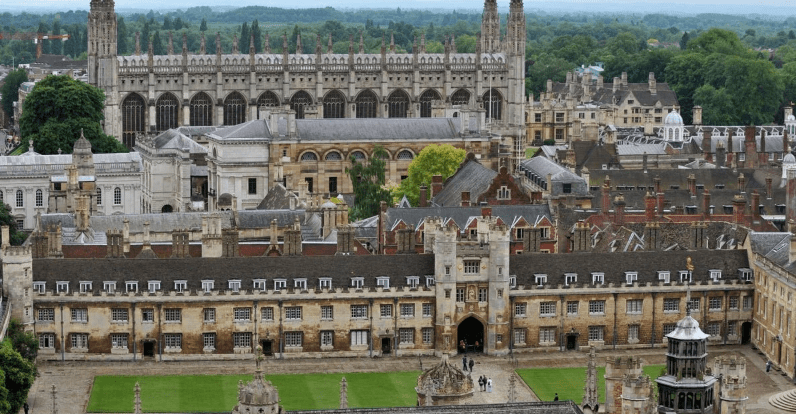The University of Cambridge has surged into joint third place in the Times Higher Education (THE) World University Rankings 2026, marking a significant jump from its fifth-place standing last year.
It’s a major moment for British academia, one that highlights both strength and underlying strain.
Meanwhile, Oxford has once again secured the coveted number one spot for the tenth year running. The University of Oxford continues to hold its crown as the top-ranked university in the world, setting a benchmark few can rival.
Joining the national success story, Imperial College London inched up to eighth, cementing its place among the global elite.
In total, 11 UK universities landed spots within the global top 100, signalling a solid showing for British higher education. But the headline victories mask a more complex landscape.
49 UK Universities made it into the top 500 rankings
While 109 UK institutions made the rankings, only 49 broke into the top 500, the lowest figure since 2016. That said, the UK remains the fourth most represented country in the global list, behind the United States, India, and Japan.
“The UK continues to punch above its weight, especially in teaching reputation and research excellence,” noted Times Higher Education (THE). However, the picture isn’t all rosy.
Top 10 Universities in the World – THE World University Rankings 2026:
| Rank | University Name |
|---|---|
| 1 | University of Oxford, UK |
| 2 | Massachusetts Institute of Technology (MIT), USA |
| 3 | University of Cambridge, UK |
| 3 | Princeton University, USA |
| 5 | Harvard University, USA |
| 6 | Stanford University, USA |
| 7 | California Institute of Technology (Caltech), USA |
| 8 | Imperial College London, UK |
| 9 | University of California, Berkeley, USA |
| 10 | Yale University, USA |
Research strength has dipped, and student-to-staff ratios are worsening — a key metric that often reflects both teaching quality and institutional resources.
According to THE, the average ratio climbed from 16.8 to 20.5 students per academic, a number that doesn’t yet account for the most recent funding cuts and job losses across the UK university sector.
“The ratio is only likely to worsen as job cuts continue and institutions’ resources swindle,” THE added.
Quick Take:
- Oxford has held the No. 1 spot globally for a decade straight
- Cambridge jumps to joint 3rd place, sharing rank with Princeton
- Imperial College is now 8th in the world
- 49 UK universities in the global top 500, the lowest in nearly a decade
- UK faces setbacks in research strength and teaching resources
Rising and Falling: A Closer Look at the Rankings
Several UK universities celebrated major wins this year. The University of Leeds recorded its best performance ever, climbing from 123rd to 118th. The University of Liverpool also improved, jumping from 160th to 143rd.
Meanwhile, St George’s, University of London, recently merged, ranked among the top three new entrants globally, slotting into the 351–400 range.
Not all institutions fared well. The London School of Economics and Political Science (LSE) fell out of the global top 50, landing in 52nd place.
University of Warwick dropped from 106th to joint 122nd both marking their lowest positions to date.
Despite this, LSE retained its crown in domestic rankings.
A spokesperson for LSE said: “Universities like ours, which specialise in social sciences, are disadvantaged by ranking methodologies that favour broader institutions with science, engineering and medicine faculties.”
Global Shift in Academic Power
Phil Baty, THE’s Chief Global Affairs Officer, warned of a fundamental shift in the global academic landscape.
“This year’s rankings highlight a dramatic and accelerating trend in the shift in the balance of power in research and higher education excellence from the long-established, dominant institutions of the West to rising stars of the East.”
East Asia is surging. Chinese universities claimed the 12th and 13th positions. The National University of Singapore came in at 17th, and the University of Tokyo rose to 26th.
Meanwhile, many Western institutions, especially in the US and Europe, are gradually losing ground. Massachusetts Institute of Technology (MIT) ranked second globally, with Princeton University tying with Cambridge in third place.
Irish Institutions Slide as Global Competition Grows
Across the Irish Sea, Trinity College Dublin suffered its worst ranking to date, falling from 139th to 173rd.
A spokesperson for Trinity said, “Fluctuations are to be expected”, given the expanding scope of global rankings. They highlighted that in the 2026 QS World University Rankings, the university improved to 75th place globally.
While UK universities continue to shine in global standings, warning signs are becoming harder to ignore. Mounting financial pressures, deteriorating staff ratios, and inconsistent research strength all raise red flags.
Still, the rise of institutions like Cambridge and Imperial reflects a deeply rooted excellence that keeps the UK competitive on the world stage. But staying at the top? That may be the harder part.
As global competition heats up, particularly from East Asia, British universities face a clear choice: adapt boldly or risk falling behind.






